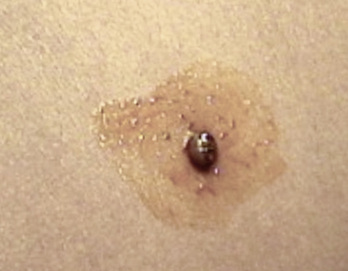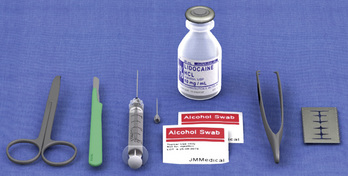Chapter 2 Shave Biopsy
Common indication
A shave biopsy is used to remove the protruding portion of a raised skin lesion when a full-thickness sample is not required. Advantages of a shave excision include a minimal time requirement, simple equipment, and the lack of need for reapproximation and suturing, and generally good cosmetic results (Figure 2-1).
Equipment
Volumes of 0.5 to 1.0 cc of 1% to 2% lidocaine, with or without epinephrine, are generally used for local anesthesia. Draw up the anesthetic with an 18-gauge needle, and then use a 27- or 30-gauge needle for injection. Use a 15 blade scalpel, a single double-edged razor blade, or a radiofrequency unit for shave biopsies (Figure 2-2).
Key steps
1. Position patient: Place the patient in a position that is comfortable for him or her and still allows adequate access to the area to be biopsied. Shave excisions should not be performed if a melanoma is suspected because it may interfere with the pathologist’s ability to grade the depth of the invasion.
2. Prepare lesion: Prepare the area with povidone iodine or alcohol, and use a clean technique; sterile gloves are not necessary (Figure 2-3).
Stay updated, free articles. Join our Telegram channel

Full access? Get Clinical Tree




